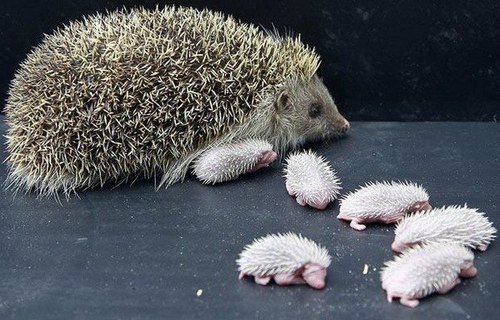It’s been a long time since we’ve done an Around the Web, but we’re ready for some fun. The days are lengthening, spring is getting closer, and though there hasn’t been much time for reading, a few items caught our eye.
[1] Music to read by:
[2] Interesting Items on the Web:
SparkPeople has a PHD team. Thanks gopintos!
Low Carb Friends has a PHD thread that’s currently at eleven pages. Here’s one person’s post:
I am losing! And I am super happy. You know how people always say, “I can see myself doing XYZ way of eating forever” Well, I have NEVER been able to say that until now with absolute certainty. I LOVE the PHD and I love knowing I will eat each day.
Amy Kubal has the top 9 ‘BLOW YOUR MIND’ reasons to attend Paleo FX 2013. I can’t wait!
Even in northern Europe, Stone Age hunter-gatherers liked carbs: “The starch sources that the archaeologists have so far found include acorns and sea beet, the latter of which is the ancestor of both the beetroot and the sugar beet.” And their dogs liked carbs too.
But Paleolithic diets were lower carb than the Neolithic: Not only the onset of cavities with the Neolithic, but the evolution of cavity-causing oral bacteria, tell us that starch eating greatly increased with the invention of agriculture.
John Ioannidis has argued that most biomedical research is wrong, and he was supported by pharmaceutical company studies: Amgen reported in Nature that its oncology and hematology researchers had failed to replicate 47 out of 53 highly promising results, the German drugs giant Bayer reported that it could not replicate about two thirds of published studies identifying drug targets. Via Mike the Mad Biologist, a new statistical study finds that if published p-values are to be believed and if the number of positive and negative results published are unbiased (both big ifs), then only 14% of biomedical research is wrong.
Seth Roberts believes two things about teaching.
Kamal Patel is quantifying himself.
The flu virus doesn’t just cause the flu: it’s been implicated in ear infections and pancreatic infections leading to diabetes.
Norovirus deserves our respect, but there’s a way to reduce risk: wash your hands, and don’t eat out.
Via @cillakat, a primer in infectious disease.
A new blog: “Perfect Health Party.”
Andrew Badenoch had to abandon last summer’s fatbike-packrafting journey through the Arctic. His account.
Do restaurants in China pass off pork rectum as calamari? This is a concern because of hepatitis E in pork intestine. If you visit China, make sure your “calamari” is well cooked!
Jamie Scott embraces the economic analysis of nutrients.
Why do our fingertips wrinkle in water? So that we can better grasp wet objects.
True facts about sloths. (Via Yoni.)
A surprising therapy for digestive tract blockage: Coca Cola.
The key to a long life: Don’t fall!
[4] Cute animals:
Via Yves Smith.
[5] Not the Weekly Video: Arthur Haines discusses myths of the Paleo Diet:
[6] More Cute Animals:
Via Yves Smith.
[7] Shou-Ching’s Photo Art:
[8] Monthly Video: Via Scott Sterling, the story of Susannah Cahalan’s descent into madness from an autoimmune disease:














Much as I like arthur haines i do need to point out that the paleolithic is an actual period of time not a general “when we were hunter gatherers”. How Native Americans lived in North America is interesting but not of much interest for human evolution, most of which happened in Africa. That article on starch in “paleolithic times” is truly dire, very few people claim that European hunter gatherers were exclusively carnivorous and starch consumption has been documented among European hunter gatherers extensively, some of it in ACTUAL paleolithic contexts such as Dolni Vestonice.
For the record sea beet is really pretty tasty, far more than burdock or dandelion roots.
Hi Paul, I am a big fan of your work and as we say where I come from “#@$&$! the begrudgers!” 🙂
You sparked my interest in autophagy and I would be very interested in your opinion on this recent paper which I found surprising.
“Autophagy deficiency leads to protection from obesity and insulin resistance by inducing Fgf21 as a mitokine.”
http://www.ncbi.nlm.nih.gov/pubmed/23202295
Hi Simon,
Thanks!
These mice have a genetic defect which makes them burn fat all the time and shuts down the normal means of protein recycling via autophagy. The constant and excessive fat burning prevents obesity and diabetes, but the mitochondrial dysfunction and reduced autophagy must shorten lifespan. I wouldn’t want to have this mutation!
Hello Paul,
Surprising Coca cola’s effect ! What’s your opinion on it ?? Do you recommend to introduce coca cola’s in our PHD diet ? 😉
Thanks for this entertaining post, full of hope and fun.
Best,
July
also, if you have ever watched elite road cyclists race. (think tour de france).
you’ll notice most of them are partial to coca cola to quickly get some energy.
mind you restricting calories is not a concern for these guys, their problem is trying to intake enough calories during a race.
Hi July,
If you block your digestive tract with steak, it might be worth considering!
Do you personally get flu shots? (flu linked to diabetes link)
Are many really manufactured in China?
Being pressured every single season is getting annoying 😐
Hi Catherine,
I personally don’t, but that’s out of laziness rather than opposition.
I’m surprised the mercury level in flu shots doesn’t leave you opposed to them. Throw in the cochrane collaboration reports on their ineffectiveness.
safe answer
The efficacy numbers are looking sort of sketchy, according to Cochrane, I’d say it looks like a coin toss
How thrilled am I to be the quoted Low Carb Friend? I will be back to share more regarding the transformative nature of the Perfect Health Diet after yet more wonderful benefits (surely) come to pass; until then, a sincere thanks to you both!
Thank you Joyce! Yes, please do come back with more!
Best, Paul
Why do our fingertips wrinkle in water? So that we can better grasp wet objects.
That’s pretty fascinating. I speculated a long time back that how fast fingers wrinkle might be an indicator of health, but I assumed it as a negative rather than a positive, ie that it indicate poorer health.
The dependence of finger wrinkling on the autonomic nervous system has led to the use of finger wrinkles as a clinical indicator of autonomic function [2,6–9].
So not only is it an indicator, it is known clinical indicator of health. Cool.
Hi, Paul!
A relative of mine in her sixties was diagnosed with PLS (Primary Lateral Sclerosis, though I’ve also heard it called Pretty Lady Syndrome) probably 3 to 4 months back. It seems to have progressed incredibly rapidly. In this time frame, she has all but lost the ability to speak, the ability to easily eat (my understanding is that she can’t really swallow anymore, which suggests she is losing control of her throat muscles) and is now experiencing some rigidity in her right hand.
This has been extraordinarily difficult to watch. I’m assuming the prognosis is grim, too, though my family has been focusing instead on any ways to help.
Do you have any suggestions for where to start? I know you can’t provide clinical advice, sure, and nor am I expecting some miraculous cure. I’m at least hoping to approach her with the idea of (radically) transforming her diet, however, with the hopes that it might help in some way. Her inability to eat complicates things, but I’m not really sure what else to do.
The PHD is my obvious choice, though I’ve also been eyeing Terry Wahls’ protocol in the hopes that it could at least ease some of her symptoms. If you have any other suggestions, please let me know.
Thanks. I hope you’re having a great week.
Hi Matt,
I think PHD would be excellent for that, likely beneficial tweaks would include intermittent fasting, lots of coconut milk (mildly ketogenic), lots of vegetables (Terry Wahls style).
I think it’s likely she can significantly slow down progression.
Infections are likely causes of ALS and motor neuron disease, but I don’t know enough to guess whether any anti-microbial treatment might help her.